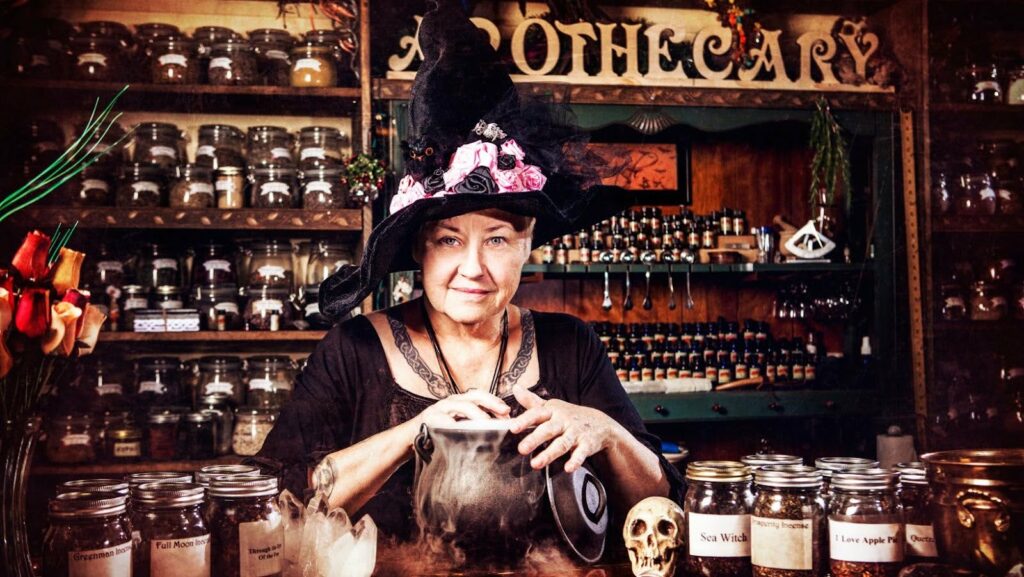Trends of all shapes, sizes and intrigue are constantly coming and going. One peculiar trend that’s caught the eyes of many is the Apothecary Aesthetic. It’s rooted in the nostalgia of the old-world charm and combined with modern sensibilities. Offering a unique blend of history, warmth and functionality.
Understanding the Apothecary Aesthetic
The apothecary aesthetic draws inspiration from the historic apothecary shops, pharmacies, and herbalists of centuries past. These spaces were once the epicentres of community health, filled with glass jars, wooden shelves, and an array of mysterious herbs and potions. The design aesthetic is characterised by a rustic yet refined ambiance that exudes a sense of curiosity and exploration.
Key Characteristics
Natural Materials: Wood, stone, and metal dominate the apothecary aesthetic, creating a warm and inviting atmosphere. Think of reclaimed wood shelves, stone countertops, and wrought iron fixtures.
Earthy Colour Palette: The colour scheme is grounded in nature, featuring muted earth tones such as browns, greens, and greys. These colours evoke a sense of calm and timelessness.
Vintage Accents: Incorporating vintage and antique items is essential. Consider using old apothecary jars, scales, and medicinal bottles as decorative elements.
Functional Decor: The apothecary aesthetic marries form and function. Items that serve a purpose, such as storage jars and labelled drawers, become integral parts of the design.
Botanical Elements: Plants, herbs, and dried flowers play a significant role, adding life and vibrancy to the space. Hanging herbs or displaying potted plants can enhance the connection to nature.
Creating an Apothecary-Inspired Space
Start with the Foundation:
The apothecary aesthetic begins with a solid foundation of natural materials. If you have oak wooden floors, consider sanding them down to a natural finish or using a darker stain to mimic the look of aged wood. Stone or brick walls can add texture and depth, while exposed beams provide an authentic rustic touch.

For those renovating or building new spaces, selecting reclaimed wood and natural stone tiles for flooring and walls will instantly imbue the area with a sense of history and character.
Choose the Right Furniture:
Furniture in an apothecary-inspired space should be both functional and aesthetically pleasing. Choose pieces made from solid wood, such as a large wooden table or a set of vintage-style cabinets with multiple drawers. These pieces can serve as focal points in the room, reminiscent of the cabinets and counters found in traditional apothecaries.
Tip: Look for furniture with intricate detailing, like carved legs or ornate handles, to add a touch of elegance.
Accessorise with Vintage Finds:
The key to achieving the apothecary aesthetic lies in the details. Scour antique shops, flea markets and thrift stores for unique finds that tell a story. Apothecary jars, old books, glass bottles and vintage scales can be used as decorative accents, enhancing the theme.
Arrange these items thoughtfully on shelves or tables, creating small vignettes that draw the eye. Grouping objects in odd numbers, such as threes or fives, often yields the most visually appealing results.
Incorporate Botanical Elements:
Plants and herbs are integral to the apothecary aesthetic, adding life and colour to the space. Incorporate a variety of plants, from potted herbs like rosemary and lavender to larger indoor trees such as fiddle leaf figs.
Consider creating a small indoor herb garden on a windowsill or using hanging planters to introduce greenery without taking up valuable floor space. Dried flowers and herbs can also be displayed in glass jars or woven baskets for a rustic touch.
Lighting:
Lighting plays a crucial role in setting the mood of an apothecary-inspired room. Go for warm, ambient lighting to create a cosy and inviting atmosphere. Edison bulb fixtures, wrought iron chandeliers and vintage-inspired lamps can all contribute to the aesthetic.
For a more authentic look, consider using candlelight as a supplementary lighting source. Candles placed in glass lanterns or vintage holders can add a touch of romance and nostalgia.
Apothecary Aesthetic in Your Home
In the living room, focus on creating a cosy and inviting atmosphere. A large wooden bookshelf filled with vintage books and decorative items can serve as a focal point. Add plush, textured textiles such as woollen throws and velvet cushions for comfort.
The kitchen is an ideal space for the apothecary aesthetic, given its emphasis on functionality. Use open shelving to display glass jars filled with spices and dried goods. Consider a wooden kitchen island with drawers and compartments for added storage and charm.

Transform your bathroom into a spa-like retreat with the apothecary aesthetic. Use wooden shelves to store toiletries in vintage jars and bottles. Add a touch of luxury with a clawfoot bathtub and brass fixtures.
